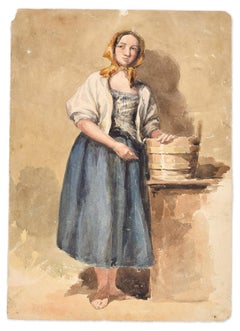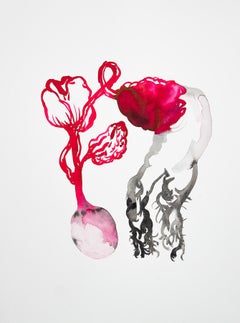Agostino Aglio Art
Agostino Aglio was born on December 15, 1777, in Cremona, Italy. He was an Italian painter, draftsman, engraver and lithographer. Son of Gaetano and Anna Maria Mondoni, he was sent to Milan in 1789 to study with Giocondo Albertolli and then in Rome with the landscape artist Campovecchio Mantovano. In 1798, he volunteered in the Lombard Legion of the Cisalpine Republic. From 1799–1802, he traveled to Greece and Egypt with the architect William Wilkins, who invited him to England. He settled in England in 1803 and two years later he married Letitia Clarke. He decorated churches, theaters and villas, executed two portraits of Queen Victoria and several landscape paintings in watercolor. In 1849, he was struck by paralysis and continued to work with his left hand. Many of his paintings are kept at the Victoria and Albert Museum in London. He died on January 30, 1857, in London.
Early 19th Century Agostino Aglio Art
Ink, Watercolor
2010s Contemporary Agostino Aglio Art
Ink, Paper, Watercolor, Pen, Permanent Marker
2010s Contemporary Agostino Aglio Art
Paper, Ink, Watercolor
Early 2000s Expressionist Agostino Aglio Art
Paper, Ink, Watercolor
2010s Contemporary Agostino Aglio Art
Paper, Ink, Watercolor
2010s Contemporary Agostino Aglio Art
Paper, Ink, Watercolor, Pen, Permanent Marker, Color Pencil
2010s Contemporary Agostino Aglio Art
Ink, Watercolor, Permanent Marker, Color Pencil, Pen
2010s Contemporary Agostino Aglio Art
Paper, Ink, Watercolor
2010s Contemporary Agostino Aglio Art
Paper, Ink, Acrylic, Watercolor, Permanent Marker
2010s Contemporary Agostino Aglio Art
Paper, Ink, Acrylic, Watercolor, Permanent Marker
2010s Modern Agostino Aglio Art
Paper, Ink, Acrylic, Watercolor, Permanent Marker
2010s Modern Agostino Aglio Art
Paper, Ink, Acrylic, Watercolor, Permanent Marker
2010s Modern Agostino Aglio Art
Paper, Ink, Acrylic, Watercolor, Permanent Marker


